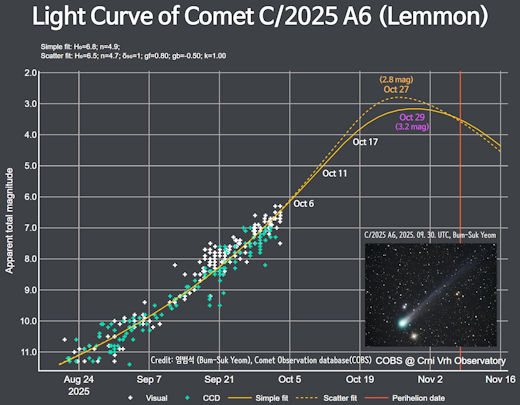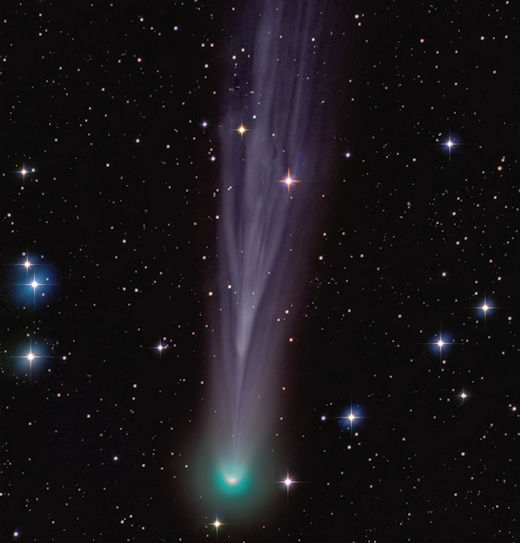MARS ROVER SEES COMET ATLAS: Last week, interstellar comet 3I/ATLAS flew past Mars. Perseverance saw it. NASA has just released two photos from the rover’s Navigation Camera (Navcam): #1, #2. The images aren’t visually spectacular, but they do underline the comet’s proximity to the Red Planet. From Mars, 3I/ATLAS glowed at magnitude +6.7--about 90 times brighter than it appeared from Earth. The fact that Perseverance could capture it with a camera not designed for astrophotography bodes well for the much more sophisticated data being gathered by the orbiting Mars Fleet.
DON'T FORGET COMET LEMMON: With so much attention on interstellar Comet 3I/ATLAS, it is easy to forget a local comet brightening so rapidly that ordinary sky watchers will soon be able to see it with their own eyes: Comet Lemmon (C/2025 A6). It is falling toward the sun for a close encounter near the orbit of Mercury on Nov. 8th.
"This comet is developing very nicely and it is already an impressive object, well-placed for observation in the morning sky," says Nick James of the British Astronomical Association. "It is definitely worth getting up for!"
The light curve of Comet Lemmon shows that it is about to cross the threshold (m=+6) of naked-eye visibility:
"I think we can now be reasonably confident that this will be a very nice evening object when it is at its brightest around New Moon in late October," says James.
Not only is this comet bright, but also it is remarkably active. In recent nights, amateur astronomers have watched dozens of gaseous knots and filaments billowing down Lemmon's tail. Here's a freeze-frame on Oct. 5th from Italian astronomer Rolando Ligustri:
The ever-changing structure in the comet's tail is a likely result of two factors: Buffeting by the solar wind and dynamic jets in the comet's core. They're combining to make this a very satisfying target for astrophotographers.
Finding Comet Lemmon is easy. It's in the constellation Ursa Major (the Big Dipper) near the 3rd magnitude star mu Ursa Majoris. For most observers in the northern hemisphere, it is located well above the eastern horizon before sunrise. Sky maps: Oct. 5, 6, 7, 8, 9, 10, 11, 12, 13.











No comments:
Post a Comment
you got something to say... please say it